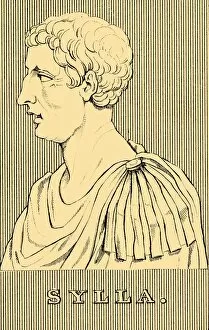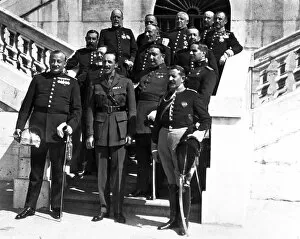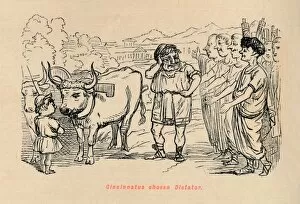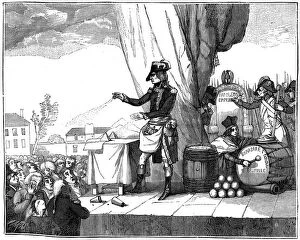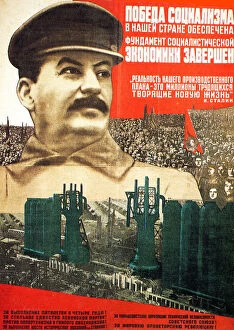Dictatorship Collection (page 7)
Dictatorship: A Tale of Power and Oppression Throughout history
For sale as Licensed Images
Choose your image, Select your licence and Download the media
Dictatorship: A Tale of Power and Oppression Throughout history, the world has witnessed the rise and fall of numerous dictators who have left an indelible mark on society. From Napoleon Bonaparte to Francisco Franco, these figures have shaped nations and altered the course of history. However, their reigns were often marred by brutality, suppression, and a disregard for human rights. In World War II, a British poster titled "Tittle Tattle Lost the Battle" warned against careless talk that could aid dictatorships. It served as a reminder that even seemingly innocent conversations could inadvertently support oppressive regimes. One such regime was led by Napoleon Bonaparte in 19th-century France. As both a general and emperor, his rule was marked by military conquests but also highlighted his thirst for power and control. The Barcelona International Exhibition poster from 1929 showcased Spain's attempt to present itself as progressive under dictatorship. However, beneath this facade lay an authoritarian regime that stifled dissenting voices. Vladimir Lenin and Joseph Stalin's alliance during Lenin's final years demonstrated how one dictator can pave the way for another. Their meeting at Lenin's villa in Gorki symbolized the transition from one autocratic leader to another within Russia. Spain experienced its own dark period with Francisco Franco's dictatorship after World War II. The post-war era saw widespread repression as Franco consolidated power through censorship and political persecution. The Valley of the Fallen in Spain stands as a haunting reminder of Franco's legacy – a massive monument built using forced labor where victims of his regime are buried alongside him. This site serves as a chilling testament to the horrors inflicted upon those who opposed dictatorial rule. Lenin’s leadership in Russia ushered in communism but also established an iron grip on society through totalitarianism. His ideology may have promised equality but ultimately resulted in further oppression under Stalin’s rule.

